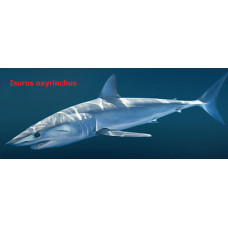From the Greek ωόν - egg and φάγος - devour.
Oophagy is the eating by embryos of some sharks of unfertilized and developing eggs in the mother's oviducts.
Tritons eat the eggs of their own species as well as the eggs of fish. The eggs of other fish species are periodically eaten by many fish species. For example, haddock destroy herring eggs in large quantities in spring.
Intrauterine oophagy involves the embryo eating unfertilized eggs or other embryos. This phenomenon is found in all sharks of the Lamniformes, as well as in such shark species as the mako shark, bigeye fox shark, pelagic fox shark, Atlantic herring shark, rusty nurse shark, and members of the family of false killer sharks. The phenomenon of intrauterine oophagy is most common in the longfin mako shark, which gives birth to only two young sharks that eat all other eggs and embryos. In the sandbar shark Odontaspis taurus, the number of eggs in the ovary reaches 24,000 (their total mass is 2.5 kg), they are in egg capsules, each containing about 20 eggs. Intrauterine development of embryos begins quite early - at a length of 4-5 cm. In the initial stages of development, the embryo uses the nutrients of the yolk sac; for further development it needs more food. Embryos 17 cm long do not differ from adult sharks in body shape and dental development. Observation of live embryos about 26 cm long showed that they actively move in the cavitary fluid among fully or partially eaten egg capsules.
Oophagy
Tags: oophagy

